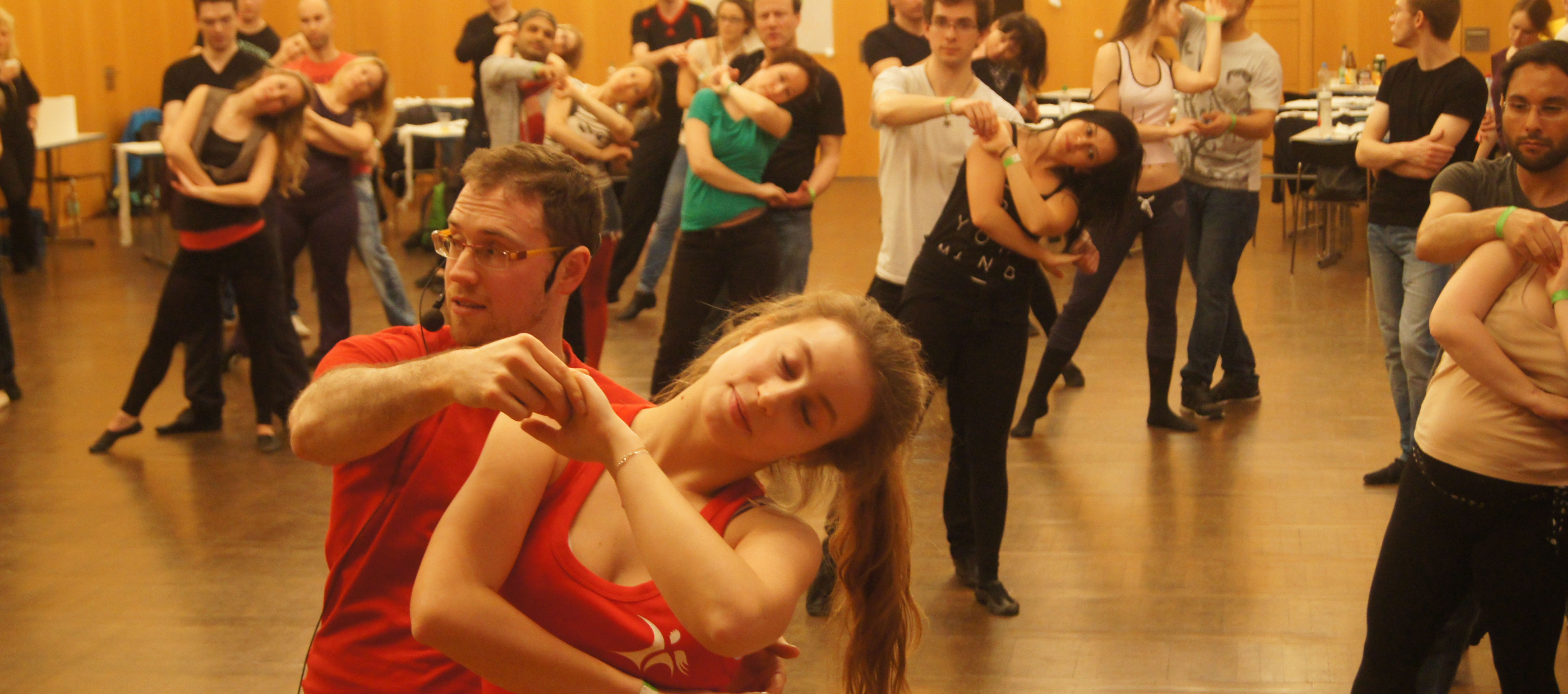Brazilian Zouk
Brazilian Zouk and its caribbean origins: One music, three dances.
To speak about our lovely brazilian zouk we have to start the journey with the zouk music. This kind of music was born in the Caribbean islands of Martinique and Guadeloupe – French Antilles – with the band Kassav – the first band – in the late 70’s. The main languages was French and Antillian Creole.
This music developed in the mid 80’s to a romantic variation, zouk-love, more slowly and sensual.
The music has a great importance for the dance world, because three dances will be born within it:
1. Caribbean zouk
This dance is a little bit like merengue. The dance couple stays on the spot in a big hug and just tranfers the weight from one side to the other.
2. Kizomba
The music from Martinique and Guadeloupe mixed with the african rhythm semba – from Angola – and produced the popular kizomba music and it’s dance.
3. Brazilian zouk
This is our passion! Now we have to talk about Brazil. The lambada music was dying in the early 90’s but the dancers of lambada wanted just one thing: to continue dancing! That’s the reason why these dancers tried to put the lambada as a dance in a different kind of music.
At this time we found two types of lambada in Brazil: the lambada from Porto Seguro and the lambada from Rio de Janeiro. Both of them took the zouk music to continue dancing. Today we call lambazouk to the zouk which comes from the lambada of Porto Seguro and continue dancing a lot of lambada elements. Hier you can see this variation and its great energy.
But it happened something very special in Rio de Janeiro: they tried to dance the lambada into the zouk-love variation. This experiment changed the dance because the zouk-love music was slower. Now it would be possible to dance in another way. In the original lambada the rhythm is very fast, so you can just dance the basic step on the spot. But if you are dancing with zouk-love music then you have more time and you can go forward and backwards while doing the basic step.
A big generation of great artist was responsible for this change, particularly Adilio Porto and Renata Peçanha. They were working in the dance school of Jaime Aroxa and they founded the basis for Traditional Zouk or Rio Zouk, the most extended version of brasilian zouk. Of course they weren’t working alone and they were part of a big movement. Here you can see Renata Peçanha with her current partner Jorge Péres.
Today we are dancing zouk in diferent music styles. And we have the possibility too, to dance without our tipical beat. In this case we call it lyrical zouk.
Very soon we will write here some more informations about the dance.
You can find some more informations in German here: Geschichte von Zouk.

Hinterlasse eine Antwort